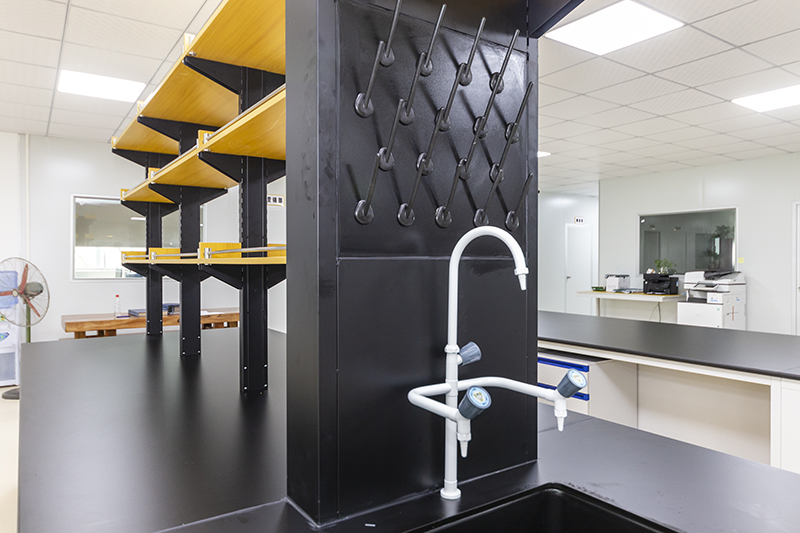Table of Contents
Laboratory Safety: Protecting Against Hazards
Laboratories often store flammable, explosive, and toxic chemicals, which means ensuring the safety of the people working there is critical. Proper lab safety management is essential to prevent accidents. Key safety features include being waterproof, fireproof, explosion-proof, corrosion-resistant, and shock-resistant. Let’s break down each area:
Waterproofing
Regularly inspect the equipment, sinks, and faucets on the lab workbench. The faucets on our workbenches are designed to securely shut off the water when not in use, helping to avoid leaks or water-related accidents.
Tip: Always make sure to turn off the faucet completely when finished.
Fireproofing
Labs can store many chemical substances, some of which are highly dangerous if not properly managed. To minimize risk, use a fireproof safety storage cabinet to securely store chemicals, especially those that are flammable or explosive. For added safety, access to these chemicals should be restricted—lab personnel should get approval from the lab manager and log usage in a record.
Anti-Toxic Measures
When working with experiments that release toxic gases, it’s important to wear protective clothing and masks. Also, ensure that fume hoods are equipped with filters containing activated carbon to trap harmful substances. For toxic liquids, always use proper containment and place reagents in designated glassware or storage cabinets to prevent spills.
Corrosion Resistance
Corrosive materials need to be stored in the right place, away from easy access. Keep these chemicals in specialized chemical storage cabinets to prevent accidents and minimize exposure.
Electrical Safety
Make sure to inspect lab workbench sockets monthly. Ensure all electrical installations meet safety regulations. Be especially careful to keep acidic or alkaline liquids away from electrical outlets to prevent short circuits or electric shocks.
Explosion Prevention
Chemicals that are explosive or highly flammable pose serious risks to lab workers. These materials should be kept in flammable storage cabinets, which are designed with two-key access to ensure that at least two people are involved in removing any dangerous substance. This extra layer of management helps reduce the chances of accidents.
Pollution Control
For experiments that generate contaminated liquids or gases, it’s essential to have a purification system in place to protect both lab workers and the environment. Proper disposal of single-use gloves and other materials is also important to avoid environmental contamination.
What A Lab Manager Should Do?
Lab managers should establish clear safety protocols that all staff must follow. Additionally, each piece of lab furniture or equipment should be used according to the supplier’s instructions to avoid accidents and ensure proper handling.




